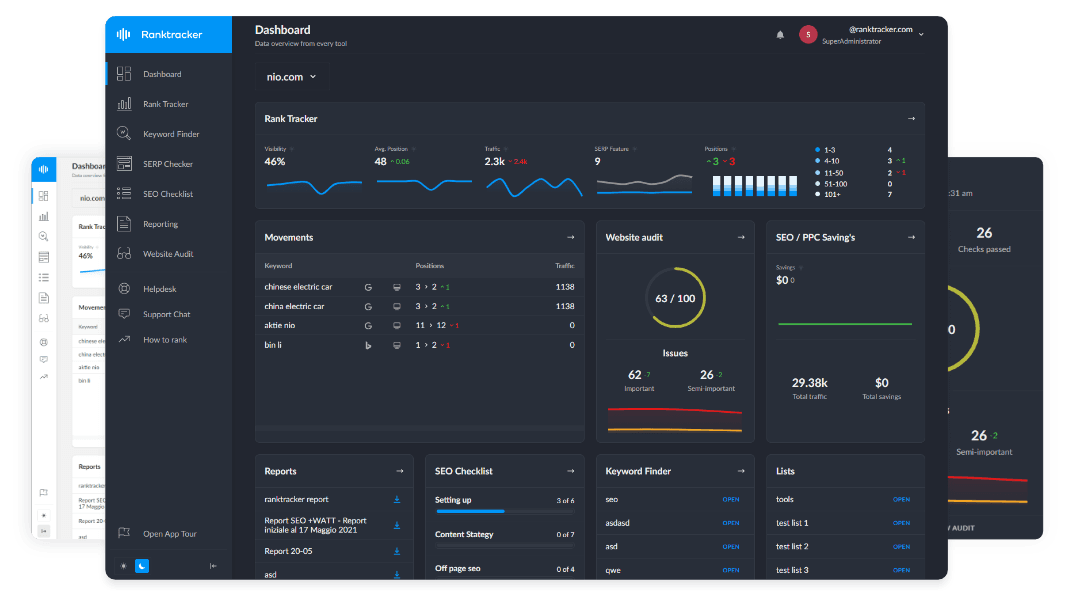Intro
Running a business can feel like juggling too many balls at once. Rising IT costs, unexpected downtime, and outdated systems drain money fast. Many owners struggle to keep these expenses under control while staying productive. Here’s the good news: managed IT services can help cut those costs significantly. For example, research shows companies with effective cloud management save up to 30% on infrastructure spending.
That’s real money back in your pocket. In this blog, you’ll learn practical ways to lower operational expenses without sacrificing efficiency. From automating tasks to reducing hardware needs, we’ll cover useful techniques you can start applying today.
Ready to start saving? Keep reading!
Minimize Onsite Infrastructure
Say goodbye to bulky servers taking up office space. Cutting back on onsite hardware can save you money and headaches.
Transition to Cloud-Based Solutions
Migrating to the cloud significantly reduces the total cost of ownership by 30-40%. Businesses no longer need to maintain expensive on-premises infrastructure. Cloud computing allows for faster application deployment—up to 40% faster than traditional systems. This approach minimizes hardware upkeep and enhances overall system efficiency.
Cloud-based disaster recovery shortens recovery times from days to hours. It also cuts downtime costs by 60% while maintaining 99% reliability. Additionally, organizations refining their cloud usage save up to an additional 30%. Visit ESI Tech to explore scalable cloud infrastructure tailored to small and mid-sized businesses. Cloud migration isn't just a tech upgrade; it's a financial benefit for your business.
Reduce Hardware Maintenance Costs
Switching to cloud-based services significantly reduces hardware maintenance. Onsite infrastructure often consumes substantial resources for repairs, upgrades, and energy consumption. Shifting 25% of operations online can lower operational overhead considerably. Businesses using remote management spend less on addressing issues with physical servers.
BYOD programs decrease expenses further by 48%. Employees use personal devices instead of company-owned machines. This approach reduces equipment costs while simplifying IT infrastructure requirements. Automating resource scaling minimizes waste by up to 45%, enhancing efficiency without additional costs. Following this, automating IT operations ensures more efficient workflows and lower labor expenses.
Automate IT Operations
Automation reduces redundancy in repetitive tasks, allowing your team to concentrate on priorities. It’s akin to setting your IT system to run hands-free while you guide the overarching strategy.
Implement Infrastructure Automation
Implementing infrastructure automation can reduce costs and enhance efficiency in IT operations. Business owners can save resources by minimizing errors and accelerating workflows.
- Use IT support automation. AI-driven tools shorten ticket resolution times by 25% and cut support costs by 40%. Faster resolutions maintain employee productivity.
- Automate network documentation tasks. Tools like Auvik make documentation simpler, saving technicians hours every week. This significantly decreases labor expenses.
- Predict future issues using predictive analytics. These systems identify 85% of common problems before they escalate, avoiding costly disruptions.
- Regularly automate software deployment processes. Automatic updates ensure smooth functioning while decreasing manual involvement.
- Enhance technician efficiency with automation solutions for routine work. Simplifying repetitive jobs enables teams to focus on critical projects rather than mundane tasks. To see what a customized approach looks like in action, learn more about Executech and their IT automation solutions built for growing companies.
Infrastructure automation maximizes resources while reducing waste in IT management efforts.
Automate Software Deployment and Updates
Automating software deployment and updates saves time and reduces operational costs. It minimizes errors, simplifies processes, and keeps systems secure.
- Save over 200 hours annually by automating compliance management. Allow your IT team to focus on business-critical tasks rather than manual checks.
- Automated software deployment ensures updates occur promptly. Limit vulnerabilities by keeping systems current without human-induced delays.
- Prevent overspending with managed service providers (MSPs). They simplify license management to avoid paying for unused software.
- Minimize downtime risks through automation in IT operations. Systems stay well-maintained while disruptions are kept to a minimum.
- Improve employee efficiency by eliminating repetitive update tasks. Workers can dedicate time to essential initiatives rather than technical busywork.
- Strengthen security with automated processes that address loopholes faster than manual efforts could resolve them.
- Build customer loyalty with reliable, updated services driven by automation. Satisfied clients tend to stay when systems remain stable and dependable.
Optimize Vendor Management
Stop managing numerous vendors—it consumes time and money. Prioritize building smarter relationships to maintain cost efficiency.
Consolidate Vendor Relationships
Companies juggling multiple vendors often waste both time and money. Consolidating vendor relationships simplifies procurement and cuts costs. Managed Service Providers (MSPs) can reduce vendor management expenses by up to 70%. Bulk purchasing through fewer suppliers lowers software licensing fees by 20-30%.
A focused approach improves procurement efficiency while enhancing partnerships with key vendors. Fewer contracts mean better coordination and less oversight needed for maintenance agreements. Reducing scattered supplier deals cuts unnecessary spending, providing immediate cost-reduction benefits.
Negotiate Better Contracts
Reducing operational expenses often relies on improved contract negotiation. Collaborate with fewer vendors to secure stronger agreements and lower rates. Managed IT Services simplify vendor management, assisting you in negotiating terms such as reduced fees or quicker issue resolution times. Additionally, incorporating vendor management tools into this process can give you greater visibility and control over vendor performance and compliance. Ensure all Service Level Agreements (SLAs) include lifecycle reporting and round-the-clock customer support. Clear expectations enhance client relationships and generate savings over time. By combining contracts, businesses can allocate budgets more efficiently while avoiding unexpected costs later.
Prevent Costly Downtime
IT hiccups can halt your business progress. Stay prepared by addressing issues before they grow uncontrollably.
Proactive IT Monitoring
IT monitoring designed to prevent issues saves businesses from costly outages. It helps detect problems before they escalate.
- Regularly check systems to avoid unplanned disruptions. Predictive maintenance technology helps by identifying potential failures early.
- Apply forecasting analytics to pinpoint patterns. This can lower operational costs by 15-20%, based on research findings.
- Implement anticipatory IT management solutions for your operations. These solutions identify minor issues that could lead to costly downtime.
- Invest in preventative IT monitoring techniques. IDC reports this strategy reduces downtime by 85%, saving businesses substantial amounts yearly.
- Emphasize cost-effective downtime prevention strategies. The average cost of one hour of downtime for SMBs is $84,650, a significant impact for any business.
- Give priority to forward-thinking management with real-time tracking tools. This enhances operational efficiency and promotes smoother workflows daily.
- Develop disaster recovery plans alongside continuous monitoring services. You’ll have fewer problems when prepared for unexpected events!
Disaster Recovery Planning
Every hour of downtime can cost businesses thousands. Disaster recovery planning protects your operations from extended interruptions and financial loss.
- Transition to cloud-based backup systems. These reduce recovery time from days to hours, saving up to 60% on costs. They also maintain 99% system reliability measures for secure business continuity.
- Define clear disaster resilience measures. Include emergency preparedness planning for natural disasters, cyber threats, or hardware failures. Teams should know their roles during emergencies without second-guessing.
- Regularly test data recovery solutions. A plan is ineffective if it fails under pressure. Conduct drills quarterly to confirm system reliability and identify weaknesses before real crises hit.
- Strengthen breach prevention strategies like advanced cybersecurity protocols. Organizations with enhanced cloud security avoid $680,000 in average breach-related expenses annually.
- Build strong risk management tactics. The National Archives data shows that businesses losing data centers for over ten days have a 93% chance of bankruptcy within a year.
- Review downtime reduction strategies frequently. Focus on addressing gaps that lead to unnecessary costs while improving overall efficiency.
Enhance IT operations through automation next to achieve savings while ensuring stability.
Conclusion
Managed IT services to reduce costs and simplify operations. They streamline budgets, minimize risks, and keep systems running smoothly. Intelligent technology decisions lead to fewer unexpected issues and greater savings.
The All-in-One Platform for Effective SEO
Behind every successful business is a strong SEO campaign. But with countless optimization tools and techniques out there to choose from, it can be hard to know where to start. Well, fear no more, cause I've got just the thing to help. Presenting the Ranktracker all-in-one platform for effective SEO
We have finally opened registration to Ranktracker absolutely free!
Create a free accountOr Sign in using your credentials
Take action now to experience the benefits!

